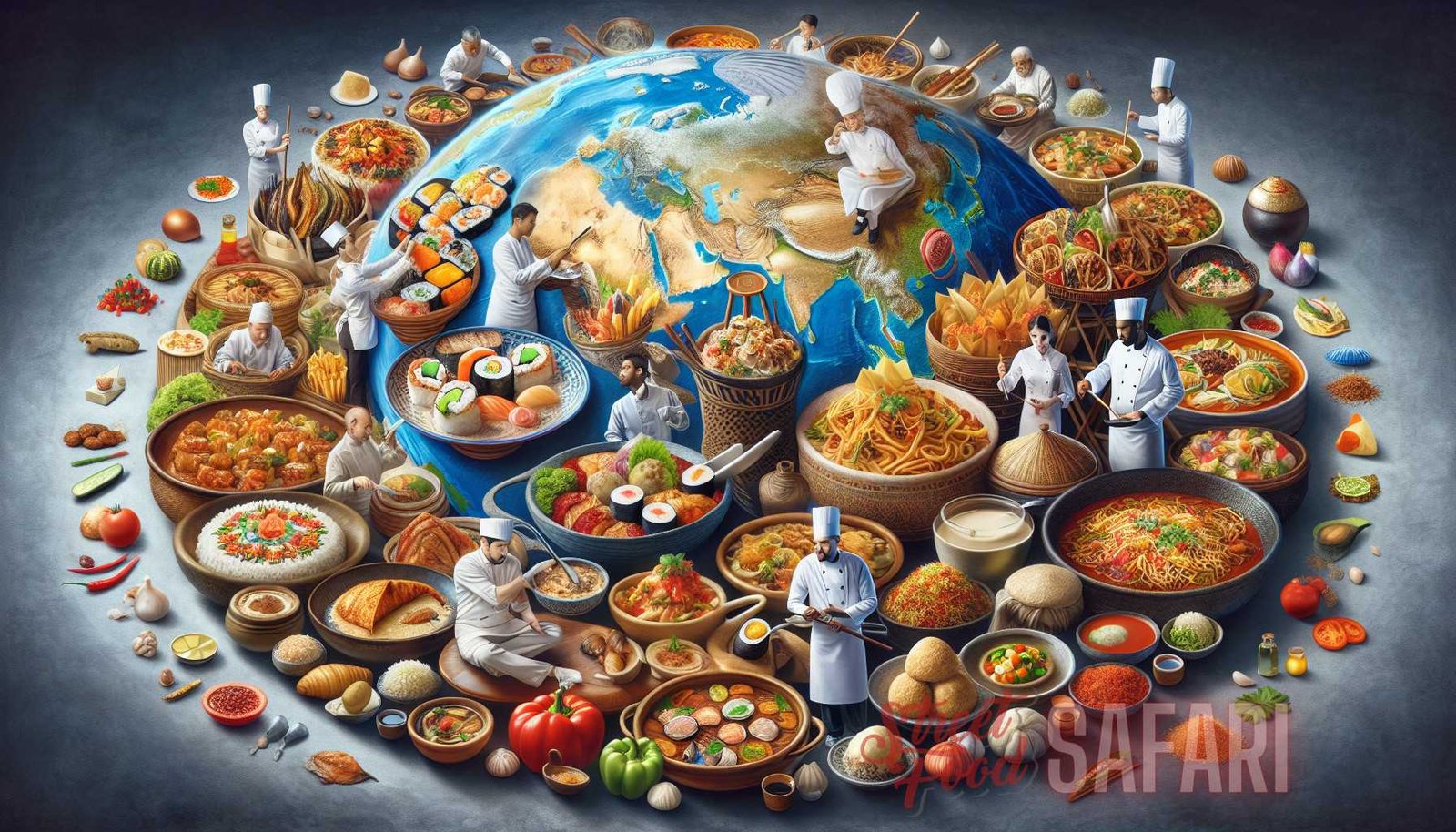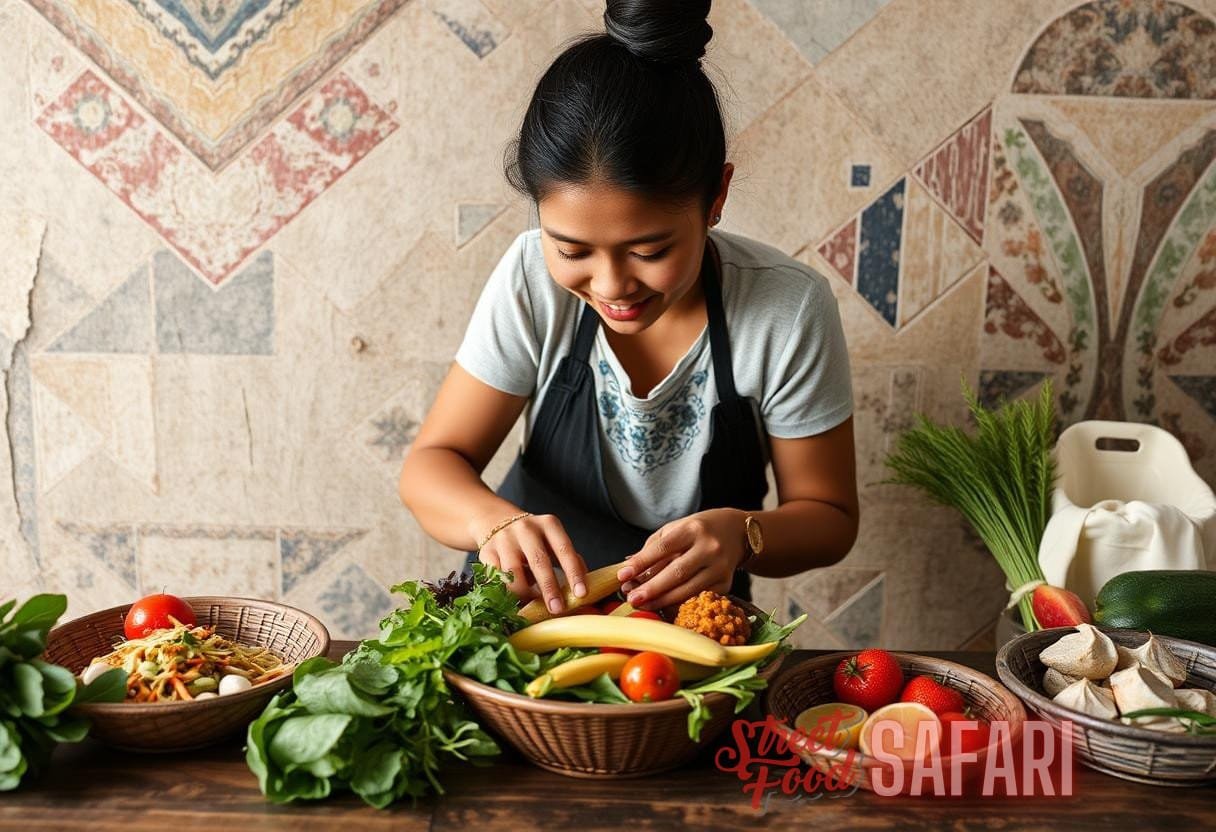Introduction
Culinary exploration is a fascinating way to immerse oneself in the cultures and traditions of different countries. People around the world have always had a deep connection with food, and it has become an integral part of travel experiences. Whether it’s the street food of Bangkok, the seafood of Tokyo, or the pasta of Rome, every destination offers unique flavors that tell the story of its people and history.
In this article, we embark on a global gastronomy expedition to uncover the stories behind international culinary delights. We will explore the global flavors that define various regions, cities, and countries and discover the secrets of their most beloved dishes. From the traditional recipes passed down through generations to the contemporary fusion creations, we will unravel the fascinating world of international cuisine.
The Art of Street Food: Unveiling Culinary Treasures
When it comes to exploring global flavors, street food is one of the most exciting and accessible ways to experience local cuisine. It offers a glimpse into the daily lives of locals and presents an opportunity to taste authentic dishes that have stood the test of time. Street food is a global tradition that brings people together, and each country has its own iconic street food culture.
Food exploration is a thrilling adventure that takes you to bustling markets, vibrant neighborhoods, and busy street corners. From the tempting aromas wafting from food stalls to the sizzling sounds of cooking, the street food experience engages all your senses.
Here are some of the world’s top street food destinations:
- Bangkok, Thailand: Known for its delectable Thai street food such as pad Thai, green curry, and mango sticky rice.
- Mexico City, Mexico: Famous for tacos al pastor, quesadillas, and tamales.
- Marrakech, Morocco: Offers a range of mouthwatering Moroccan street food like tagine, couscous, and harira soup.
- Hanoi, Vietnam: Home to the iconic Vietnamese dish pho, as well as banh mi and bun cha.
- Istanbul, Turkey: A culinary paradise with treats like kebabs, pide, and baklava.
The Global Influence on Street Food
Street food is a reflection of a country’s diverse history and cultural influences. Many street food staples were born out of the amalgamation of different culinary traditions, making them unique and full of global flavors. Here are a few examples:
- Bahn Mi: This iconic Vietnamese sandwich is a fusion of French and Vietnamese cuisine, combining baguettes with various fillings such as pate, pickled vegetables, and grilled meats.
- Pizza: Originating from Italy, pizza has become a global phenomenon with countless regional variations. From the classic Margherita to the New York-style slice, pizza has transcended borders and captivated taste buds worldwide.
- Gyoza: These delicious Japanese dumplings have their roots in Chinese cuisine. They are typically filled with a mixture of ground meat and vegetables and are enjoyed with a savory dipping sauce.
Exploring street food is like taking a culinary journey around the world, where every bite tells a story of cultural exchange and innovation.
Regional Delicacies: Uncovering Culinary Gems
While street food offers an immersive experience, regional specialties provide a deeper understanding of a country’s culinary heritage. Each region is known for its unique ingredients, cooking techniques, and flavor combinations, making regional delicacies a must-try for any food lover.
Let’s dive into some of the most renowned regional delicacies:
Europe
Italy: Known worldwide for its rich culinary tradition, Italy is home to a plethora of regional delicacies. From the hearty Bolognese ragu of Emilia-Romagna to the delicate seafood dishes of Naples, each region has its own gastronomic identity.
France: French cuisine is celebrated for its elegance and attention to detail. Indulge in escargots in Burgundy, cheese and wine in Alsace, and the world-famous pastries of Paris.
Spain: Tapas culture defines the culinary scene in Spain. Explore the diverse flavors of Catalonia, feast on paella in Valencia, and indulge in the vibrant seafood dishes of Galicia.
Asia
India: Indian cuisine is a tapestry of flavors and aromatic spices. From the vibrant curries of the north to the fiery dishes of the south, every region in India has its own culinary treasures to offer.
Japan: Japanese cuisine is known for its simplicity and precision. Sushi in Tokyo, ramen in Hokkaido, and okonomiyaki in Osaka are just a few examples of the diverse flavors found in different regions of Japan.

Thailand: Thai cuisine is a harmonious balance of sweet, sour, salty, and spicy flavors. Indulge in the vibrant street food of Bangkok, explore the aromatic curries of Chiang Mai, and savor the fresh seafood of the southern islands.
Middle East and Africa
Lebanon: Lebanese cuisine is a fusion of Mediterranean and Middle Eastern flavors. From the mezze platters of Beirut to the aromatic shawarma of Tripoli, Lebanon offers a diverse range of culinary delights.
Morocco: With its rich spices and aromatic tagines, Moroccan cuisine is a feast for the senses. Explore the vibrant markets of Marrakech and sample dishes like couscous, pastilla, and harira soup.
The Americas
Mexico: Mexican cuisine is recognized by UNESCO as an intangible cultural heritage. From the ancient Mayan flavors of the Yucatan Peninsula to the street food delights of Mexico City, Mexican cuisine is a true celebration of flavor.
Peru: Peruvian cuisine is a fusion of indigenous ingredients and flavors from Spanish, African, and Asian cuisines. Try ceviche in Lima, discover the unique flavors of the Amazon in Iquitos, and indulge in the culinary delights of Cusco.
These are just a few examples of the regional delicacies that await adventurous food enthusiasts. Exploring the culinary landscape of a country is like uncovering a hidden treasure trove of flavors.
The Rise of Fusion Cuisine: Blending Cultures and Flavors
In recent years, fusion cuisine has gained popularity as chefs push the boundaries of traditional cooking. Fusion cuisine combines elements from different culinary traditions, creating innovative and unique flavor combinations.
Fusion cuisine is a testament to the ongoing globalization of food and the influence of diverse cultures on one another. It allows chefs to experiment with ingredients, techniques, and flavors, resulting in exciting and unexpected dishes. Here are a few examples of fusion cuisine:
- Sushi Burritos: A fusion of Japanese sushi and Mexican burritos, these oversized sushi rolls are filled with a variety of ingredients, such as raw fish, rice, and vegetables, and wrapped in a sheet of seaweed.
- Korean Tacos: Combining the flavors of Korean barbecue with the convenience of a taco, Korean tacos feature marinated meats like bulgogi or spicy pork, topped with pickled vegetables and spicy sauces.
- Indian-Chinese Cuisine: In India, Indo-Chinese cuisine has become a popular fusion style. Dishes like chili chicken, paneer manchurian, and hakka noodles combine Indian spices with Chinese cooking techniques.
Fusion cuisine encourages creativity and open-mindedness in the culinary world. It is a celebration of the diversity of global flavors and demonstrates how food can transcend cultural boundaries.
The Global Influence of Celebrity Chefs
Celebrity chefs have played a significant role in popularizing international cuisine and bringing global flavors to the forefront. Their innovative cooking techniques, unique flavor combinations, and captivating personalities have inspired a new generation of food enthusiasts.
Some of the most renowned celebrity chefs known for their exploration of global flavors include:
- Anthony Bourdain: The late Anthony Bourdain was a chef, author, and television personality known for his adventurous spirit and love for street food. His shows, such as “No Reservations” and “Parts Unknown,” introduced viewers to the diverse culinary traditions of various countries.
- Yotam Ottolenghi: Israeli-born chef Yotam Ottolenghi has revolutionized the way we view and cook vegetables. His unique blend of Middle Eastern and Mediterranean flavors has made him one of the world’s most influential chefs.
- Massimo Bottura: Italian chef Massimo Bottura is the founder of Osteria Francescana, a three-Michelin-star restaurant in Modena, Italy. His innovative approach to Italian cuisine has made him a prominent figure in the culinary world.
Celebrity chefs not only bring global flavors to our screens but also inspire us to embrace and explore diverse culinary traditions. Their passion for food encourages us to step outside our comfort zones and experience the world through its flavors.
Conclusion
The global gastronomy expedition has taken us on a journey to uncover the stories behind international culinary delights. From the vibrant world of street food to the regional delicacies that define cultures, and the rise of fusion cuisine, we have discovered how food can tell us the tales of distant lands.
Exploring global flavors is a never-ending adventure, as there is always something new and exciting to discover. Food is not only a means of sustenance but also a powerful connector of people and cultures. It transcends borders, breaks down barriers, and brings us together.
So, the next time you embark on a culinary journey, remember to savor every bite and appreciate the rich tapestry of flavors that the world has to offer.



